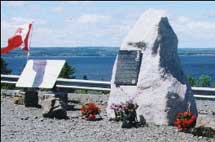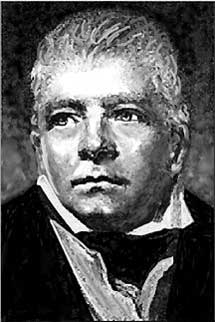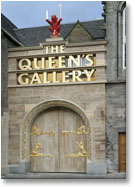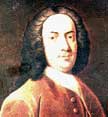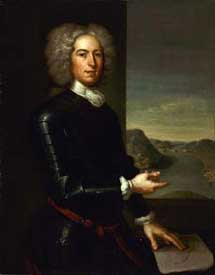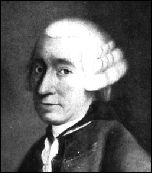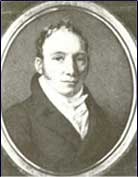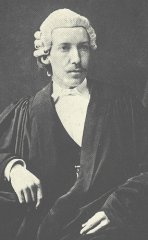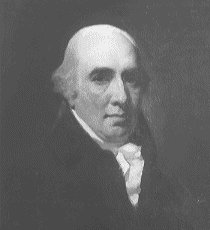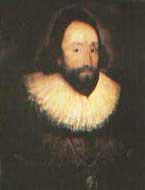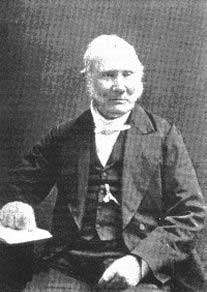Click below to find other Heroes & Famous Scots
|
|
| Sandeman, Robert |
| Saint. Clair, Henry |
| Scott, Sir Walter |
| Selkirk, Alexander |
| Selkirk, Thomas Douglas |
| Short, James |
| Simpson, Archibald |
| Smellie,William |
| Smellie, William |
| Smibert, John |
| Smith, Adam |
| Smollett, Tobias |
| Stevenson, Robert |
| Stevenson, Robert Louis |
| Stewart, Dugald |
| Stirling, William Alexander |
| Stirling, Robert |
| Stirling James |
| |
| |
| |
| |
| |
| |
| |
| |
| |
| |
| |
| |
| |
| |
| |
| |
| |
| |
| |
| |
| |
| |
|
Heroes & Famous Scots (S) |
| SANDEMAN, ROBERT (1718-1771) |
Robert Sandeman was born at Perth , in Scotland in the year 1718, he was known as a dissenter from the established Presbyterian Church of Scotland. Robert Sandman's followers were known as the Glasites, who wished to return to what they considered primitive or more pure Christianity. Before emigrating to New England in the year of 1764, Robert stirred up quite a bit of controversy in Scotland with his Letters on Thereon and Aspaslio, Addressed to the Author, published in the year of 1757. Sandeman believed that the death of Jesus Christ alone had been sufficient to remove all the worlds' sin. His teachings got him thrown out of the Church of Scotland, so he set up his own church at Dundee and then at Perth both in the Central belt of Scotland .
He could appear to some people as a religious zealot but he was in fact just a person who believed he was right and was not about to change his opinion for anyone without proof that they were in fact correct.
|
|
He loved to travel and preach to all the different people that he met. If his sermons went down well he would decide to set up a church in the area. On the other hand if he was not received in a way he found welcoming he would leave a representative in the area for a few weeks to see if they could turn the people to his way of thinking.
Settling in Danbury, Connecticut, in the United States, where his church became the sect's principal centre, Sandeman and a number of his followers set about establishing churches in many other towns and cities, but were opposed by Anglican New England ministers, who did not appreciate this charismatic Scottish minister among their ranks, who could cause their own people to doubt their form of faith or belief. They also found that even if he did not stay long in the town or city there was a certain amount of unrest among the people who had listened to this great Scottish speaker. For one thing, in a most un-American way, they believed that the amassing of any wealth was unscriptural and therefore wrong. Sandman's Church declined at the end of the century, for what reason this happened nobody will ever know, it may have been down to the reason that Robert Sandeman, had taken unwell for a short period and had not been able to carry out his duties in the normal fashion. Although the church declined it may have had an influence on the later founding of the Disciples of Christ. He was a man who believed without fear that he was correct in what he thought. He was a man of integrity and a good Scot. |
|
|
| Back to Top |
| ST.CLAIR, HENRY (1345-1400) |
| Henry St.Clair was an adventurous Scottish explorer who in fact discovered America at least ninety years before the so called discovery by the Italian Columbus. There were also stories about an Irish St Brendan and a Welshman prince Madog having been to America before the Italian. St.Clair was one of the few people to have made a pilgrimage to Palestine , and was actually known there as “Henry the Holy” St.Clair was in charge of the Northern isle of Scotland which included Orkney, Shetland, and the Faroe islands . |
|
| In the year of 1398, Sir Henry St.Clair travelled with a party of Knights Templar under their famed captain and navigator Antonio Zeno, landing at sites on Prince Edward Island , Nova Scotia and what is now called Massachusetts . His visits are recorded in the tribal legends of the Micmacs, some of whom still survive in New England . These are authentic records and prove that again Scotland was first. St.Clair was great explorer and a truly great Scotsman.The picture is the commemorative plaque which tells the story of the Nova Scotia landing ninety years before Columbus. |
|
| Back to Top |
| SCOTT, SIR WALTER (1771-1832) |
Sir Walter Scott, even hearing the name makes a person think of adventure stories and Jacobite intrigue. Edinburgh-born Walter Scott can be said to have invented the historical novel. He has remained one of the most popular novelists of all time; his style may be looked upon as boring by modern-day readers more used to television that using their imagination to conjure up the wonderful pictures that Scott described in his famous novels. Trained as a lawyer and sheriff of Selkirk in the year of 1799, Scott was a principal clerk of session in 1896, but had already embarked upon his literary career by translating books from the German to English.
Scott, first published more as a poet than a novelist and in the year 1802, brought out his first works. Soon his famous novels were to follow at a fearsome rate. |
|
The reason for the speed his books were written was a simple arithmetic problem. His money did not total what his outgoings had become. He was forever seeking money to keep his mansion at Abbotsford going. He was involved in all sorts of work, prose and writing for other publications, doing reviews. He was always kept at optimum speed when writing.
We remember Scott as novelist, biographer, ballad collector, editor, poet, critic and historian. In all his novels, Scott gave us a romantic, nationalistic Scotland . Such was his fame, that when George IV came to Scotland , the author stage-managed the visit, the King himself being dressed in the once-forbidden Highland tartan. Scott's life was memorialized in a work by his son-in-law John Gibson Lockhart's the Life of Scott . There is no doubt that Scott was the best known and loved Scottish writer of his time and was definitely classed as a Great Scot, unless of course you have any Jacobite tendencies in your family. Walter Scot was known to have given away a Jacobite plan to set up a militia in 1820. He reported the leaders to the government officials. so maybe saying he was a Great Scot was not too accurate an opinion, if you were a Jacobite. |
|
| Back to Top |
|
SELKIRK, ALEXANDER (1676-1721) |
Robinson Crusoe, brings images of desert islands, shipwrecks and man Friday. What young boy has not thrilled to the tales of adventure written by Daniel Defoe (who by the way was an English spy) The story is actually based on fact and depicts the tale of a Scottish sailor called Alexander Selkirk, born in Largo, Fife, where his father was a shoemaker. Alexander ran away to sea in the year of 1695, little did he know that his subsequent adventures would inspire one of the most well known and beloved novels in the history of English literature. Daniel Defoe's Robinson Crusoe was published in 1719; two years before the enterprising Scot died as master's mate on a British ship.
|
|
| Young and impressionable Alexander Selkirk joined in with a pirate band, Selkirk's obvious seamanship soon won him the position of master of a galley, but a quarrel with his captain found him put ashore (at his own request) on Mas a Tierra Island in the Juan Fernandez Group, about 400 miles west of Valparaiso, Chile. He was not discovered for five years, when an English ship picked him up and took him back to England , where they arrived in the year of 1711. One year later, a description of his lonely but amazingly adventurous life on the island was published in ‘Cruising Voyages Round the World'. It was also written up by essayist Richard Steele in The Englishman in late 1713. But it was Defoe who gave the world the imaginative story concocted out of Selkirk's' lonely sojourn on the island. Alexander Selkirk was definitely in the vane of a Scottish adventurer and was therefore a great scot.The picture by Rosemary Sage, of pasadina depicts Robinson Crusoe as he was described in Defoes book . |
|
| Back to Top |
|
SELKIRK, THOMAS DOUGLAS, 5th Earl (1771-1820) |
Thomas Douglas Selkirk was the founder of the Canadian City of Winnipeg , in Manitoba . Selkirk was born and brought up in St. Mary's Isle, Kirkcudbrightshire; it was he who set up the first Scottish settlement on Prince Edward Island . It seemed to Selkirk that emigration from the economically depressed Highlands to Canada would help alleviate some of the problems of the poor Scottish farmers and peasants, who had been left destitute by an uncaring English controlled Government, who had given their lands over to the sheep farmers.
|
|
From the Hudson's Bay Company, which he controlled in the year of 1810, Selkirk obtained a vast land grant in the Red River Valley and encouraged many of his fellow countrymen to settle there, near the pioneer French settlement of Ft. Rouge. Though progress in the colony was initially hindered by rivalry with the Northwest Fur Company, Selkirk's valley settlement grew rapidly in the late 19th century to become the city of Winnipeg , capital of Manitoba .
He fought hard for anything he believed in, and a safe prosperous place for Scots to thrive was his number one priority. Selkirk helped to achieve this and was undoubtedly a great Scotsman. |
|
| Back to Top |
James Short had been born in Scotland 's capital city of Edinburgh in the year of 1710, James Short is remembered as the one who produced the first truly parabolic and elliptic mirrors for reflecting telescopes, which was an amazing accomplishment at that period in time. Prior to the work of this optician and instrument maker, telescopes had suffered too much distortion to be truly effective. After hearing a series of lectures by the famous Scottish mathematician Colin MacLaurin, James Short turned his interests from the ministry to mathematics and optics. He devised advanced techniques for grinding telescopic mirrors which had never been seen or attempted before now. Short's reflecting telescopes were among the finest made at the time. |
|
| Alas, extremely secretive about his work, he destroyed his workshop tools shortly before his death. The loss of the tools was a disaster as so much more could have been produced by them and history would have been enriched to be able to view them as tools which changed the world. James Short was maybe a little eccentric but he was another great Scottish inventor who helped his fellow man |
|
| Back to Top |
| SIMPSON, ARCHIBALD (1790-1847) |
Aberdeen-born Archibald Simpson became the leading architect during his native city's rapid expansion between 1800 and 1840. Although a proud Scot he had trained in the City of London and also abroad, going as far as Italy . From 1813 to 1843, he designed many of the principal public buildings in Aberdeen , "the Granite City ." Some of his buildings are the Athenaeum, the Clydesdale Bank, St. Andrew's Cathedral and the Triple Kirks, with perhaps his finest achievement in Elgin , St. Giles. Simpson also contributed to civic architecture with his famed Bon Accord Square and Crescent. Archibald Simpson was obviously a very talented man and loved designing his home city into the beautiful place it was to become. Simpson was a great designer and a Great Scottish person. Simpson originally design this gallery which is depicted. |
|
|
| Back to Top |
| SMELLIE, WILLIAM (1697-1763) |
William Smellie was born in Lanark , Scotland in the year of 1697, he was to become famous in the field of obstetrics and midwifery teaching the subject on a scientific basis. He may very well have been the first in the world to approach this controversial subject matter in this way. James Simpson was another Scottish obstetrician who put his art and craft on a firm basis. |
|
William Smellie was to become famous because he allowed medical students to attend the delivery of poor women, as their children were delivered free of charge. This precedent was the basis that led to the use of medically trained men in childbirth, for many centuries a practice that had been enjoyed solely by midwives, often sorely untrained.
Smellie is especially known for his discovery and description of "the mechanism of labour," or how the infant's head adapts to changes in the pelvic canal during birth. When he first tried to introduce this concept he was ridiculed by some. They were soon to change their minds when Smellie delivered babies successfully time after time. He also invented an obstetric forcep. His writings include A Sett of Anatomical Tables published in the year 1754, and Treatise on the Theory and Practice of Midwifery (3 vols. 1752-64). William Smellie became a great supporter of woman everywhere and in human terms saved many lives, he is indeed a great Scottish gentleman. |
|
| Back to Top |
| SMELLIE, WILLIAM (1740-1795) |
William Smellie, was born and raised in Scotland's Capital City of Edinburgh, He was a Natural historian, and helped found the Newtonian Society in the year of 1760, and the Society of Antiquaries of Scotland in the year1780.Smellie was a writer and translator of various works in natural sciences as well as a master printer, it was only natural and perhaps inevitable that he should be asked by the Edinburgh engraver Andrew Bell, to compile the first edition of the Encyclopedia Britannica which appeared during the years 1768-1771.
The Encyclopedia, or a Dictionary of Arts and Sciences Compiled upon a New Plan was published by Smellie and two of his friends who called themselves "A Society of Gentlemen in Scotland ." It was a three-volume, 2,659-page work that sold for a year's working man's wages. |
|
| In it California is described as "a large country of the West Indies " and woman is defined as "the female of man." Nevertheless, a start had been made on what was to become one of the most informative and influential series of books ever published. At the same time, the French Encylopedie was being completed in Paris by Denis Diderot (its 280th and final volume was published in 1772). This was a great time for learned people but not so good for the uneducated. Even if they could read the books published they could never have afforded them. It makes you wonder if the price of the information was set deliberately high in an effort to keep the information from the general public.The caricature depicts William Smellie with another well know publisher from that time,Andrew Bell. |
|
| Back to Top |
| SMIBERT, JOHN (1688-175)1 |
John Smibert, had been born in Scotland 's capital City of Edinburgh . He became famous for his traditional paintings when he left his native shores and emigrated in 1728 to Rhode Island , in America . Smibert had been working as a house painter in the City of Edinburgh and training as a portrait artist in Italy . Though his initial plans to establish a college for Native Americans in the Bermudas failed through racism and a general lack of indifference to the Native Americans skills as artists, Smibert moved to Boston , where his services were soon in great demand and where his work remains an important record of early, influential Bostonians. Boston as a city was in a cultural upheaval at that time, as they tried to compete with the other great cities of the world.
|
|
| Smibert's portraits were produced in conjunction with his other paintings, copies of the "old masters" and unique casts of ancient sculpture. In the year of 1742, Smibert was asked to draw the plans for Faneuil Hall, Boston , known as one of the American cradles of Liberty . His best known work is "Bishop Berkeley, Family and Friends" produced in the year 1729, Perhaps Smibert's greatest legacy, however, comes in the influence he had on later American artists, including Copley, Feke, Trumbull and Allston. He spent much of his life encouraging Native American Painters to realise their talent in a hostile racist world. John Smibert was a great Scot who stood for racial freedom and expression of artistic talent no matter the painters gender or cultural back-ground. He was a truly great Scotsman who believed in freedom for all. |
|
| Back to Top |
Adam Smith, from Kirkcaldy, Fife, became one of the most influential social philosophers and political economists in all history is whose master work An Inquiry into the nature of causes of the Wealth of Nations was first published in 1776 but has continued its appeal and its amazing influence on all things relevant to the subject to this very day.
First studying mathematics, natural philosophy and moral philosophy at the world famous Glasgow University , Smith entered Balliol College , Oxford in the year of 1740. When he returned to Edinburgh to lecture, he met philosopher and sceptic David Hume as well as other leading intellectuals and trendsetters. |
|
In the year of 1751, he became Chair of Logic at Glasgow University and later of Moral Philosophy.
Adam Smith went on a visit to France around the time 1764 and the things he learned there about the French economy had particular interest to him. His Wealth of Nations consequently reflected much of the ideas he had so readily absorbed in that country. It can be said to have marked the huge transition from an out-dated late medieval to a very modern economy. Smith was able to grasp instinctively what it was that constituted the real wealth, and financial health of a nation; he advocated the then-revolutionary idea of free trade as a means of increasing that wealth, it was radical thinking but very logical to any other financial minds that cared to look at the concept as Smith had done.
The publication of Smith's work greatly influenced the thinking and policies of British Prime Minister William Pitt. It was rumoured that the Prime Minister was to seek the help of the brilliant mind before making financial decisions in the country as a whole. For Smith, it was the "invisible hand" of competition that acted as the guiding light for en economic system based on individual self-interests. The idea of free trade dominated British economic policy right up until the 20th century when Smith's ideas were abandoned in favour of the old controls and restrictions that he had rightly condemned as being counter productive to the acquisition of a country's wealth. They not only went against everything Smith knew about but he could say with certainty that they would lead to the country loosing huge amounts of revenue which was freely available during free trade. Smith had a great Scottish brain for financial affairs. |
|
| Back to Top |
|
SMOLLETT, TOBIAS (1721-1771)
|
Tobias Smollett came from Renton West Dumbartonshire. He became known as an outstanding figure in the development of the modern novel, His vigorous prose and brilliant portrayals of comic Scottish characters provide a wide panorama of the life of his times. Smollett was considered a working class low life Scot and lacked entry into high society, he vividly described the horrors and comic episodes exposed by the protagonist of his picaresque novel "The Adventures of Roderick Randol". |
|
This was followed by The Adventures of Peregrine Pickle in the year of1751.
Like many Scots he was a born story teller, Smollett's uncanny observations of the follies of an adventurous life came from his own experience in the British navy, where he served as second mate to a ship's surgeon in the early 1740's. On a naval visit to Jamaica , he had the good fortune to win the hand of a woman of wealth and brought her back to London . Much of these experiences found their way into Roderick Random.
Following a short prison stretch for libel, Smollett brought forth his Adventures of Sir Lancelot Greaves in 1762. After the devastating death of his young daughter in the year 1763, the Smollett's lived for a while in Europe ( France , mostly) but he returned to England to write his famous epistolary novel and masterpiece, The Expedition of Humphrey Clinker in the year 1771,a depiction of English town life. In many of his novels, Smollett substituted racial characterizations for social class, a trick that made his work very popular at a time when the Scots and Welsh, with their strange customs and even stranger languages, were coming to London in increasing numbers. He was an expert at portraying the English as Racists but they could not recognise themselves in his work. Smollett was a great writer and a true Scotsman |
|
| Back to Top |
|
STEVENSON, ROBERT (1772-1850 )
|
Robert Stevenson, helped to save many lives with his design and building of lighthouses round the coastal areas of this country. It had up until then been a very haphazard escapade to sail anywhere at night, and it had been known for people to wrongly light lanterns so that ships would founder and the cargoes could be stolen. His radical designs saw for the first time a beam of light being sent out to sea using the technology that was available at that time to use reflectors which concentrated the beam. |
|
The first light that used this system was that at Kinnarid Head in the year of 1787. A member of the newly established Commissioners for Northern Lights, Stevenson travelled around the coasts of Scotland setting up a system of lights where possible. It is said that while board the little ship that Stevenson used one of his companions, Sir Walter Scott who got inspiration for The Pirate.
In the year of 1807, Stevenson became the Commission's chief engineer. This was the same year he began work on the Bell Rock Lighthouse, the very first of his own design and completed on its isolated rock in the year 1811, it was to become the very finest example of great Scottish engineering and Stevensons favourite piece of work (the Eddystone Light off the Cornish coast in southwest England had been built by John Smeaton in the year 1755). All in all, during Stevenson's service with the Commission, twenty-three lights were erected, many of them becoming of crucial importance in Scotland 's maritime and indeed war time history. His work led to many improvements in the design and construction of lighthouses; it was continued by his three sons, Alan, David and Thomas (the father of Robert Louis Stevenson). Robert also invented the hydrophore, an instrument for obtaining specimens from water. He was a great inventor and a fine example of Scottish enterprise. |
|
| Back to Top |
| STEVENSON, ROBERT LOUIS (1850-1894) |
Though Robert Louis Stevenson is actually a bit more modern than was decided for this piece on famous Scots, how could we possibly leave him out. He is one of Scotland 's best known and loved Novelists and writers. Unfortunately for Stevenson he was plagued by bad health and on a doctor's advice moved from his beloved Scotland and settled in France as the air there was less damp than his homeland. Stevenson decided to travel to the huge country of America and it was there that he met his wife and also penned the tough novel about life in a mining camp called, Silverado Squatters.
Fame and fortune arrived in massive doses after Stevenson finished Treasure Island in the year of 1883. The well-known, well-loved tale of the search for the pirate loot of Captain Kidd and the thrilling adventures of Jim Hawkins and the rival parties involved when they disembark from the good ship Hispaniola , were the dream of every young boy who read the book was to run away to sea and have the same adventure.
|
|
| Stevenson then brought out the entirely different ‘A Child's Garden of Verses '. Followed by a second volume of poetry, ‘Underwood's', designed for a more mature audience. Then another highly successful adventure novel, Kidnapped, its less successful sequel Catriona and perhaps his most famous story of all, Dr. Jekyll and Mr. Hyde, which is still used to this day when making comparisons about someone's behaviour. As if all this were not enough, still-plagued by ill health, Stevenson finished a collection of short stories, ‘The Merry Men' in the year1887 that included the powerful duo Markheim and Thrawn Janet. He then finished another highly successful romance, ‘The Master of Ballantrae' which was made into a Hollywood movie with Errol Flynn starring in the lead. Stevenson died in the South Seas where he wrote his memorable impressions In the South Seas. Stevenson was an outstanding writer and a proud scot. |
|
| Back to Top |
|
STEWART, DUGALD (1763-1828)
|
An important contributor to the so-called "common sense" school of Scottish philosophy was Edinburgh-born Dugald Stewart. Stewart succeeded his father as Chair of Mathematics at Edinburgh in 1775, later becoming professor of moral philosophy. His own views were strongly influenced by the publication of Thomas Reid's An Inquiry into the Human Mind on the Principles of Common Sense in 1764. Stewart's own major work is Elements of the Philosophy of the Human Mind (in 3 volumes, 1792-1827). He also completed Outlines of Moral Philosophy (1793), Philosophical Essays (1810) and Philosophy of the Active and Moral Powers of Man (1828).
|
|
| He was also a well known mathematician; Stewart took a scientific approach to philosophical problems, believing with Reid and his colleagues that philosophy should be a scientific discipline free from metaphysical speculations that would distract it. He was fond of making analogies between the axioms of mathematics and the laws that govern human thinking, ideas that have been of increasing importance since the work of Einstein in the early part of this century. He was an influential Scottish figure of that time period. |
|
| Back to Top |
|
STIRLING, WILLIAM ALEXANDER, 1st Earl (1567-1640) |
William Alexander Stirling, from Menstrie, Clackmannanshire, was the founder of Nova Scotia (New Scotland) The country actually resembles many parts of Scotland and the Scottish accent can be heard all over the area. There are Gaelic schools and bagpipers all over the land. Nova Scotia was the site of the first permanent European settlement in North America north of Florida Stirling was an interesting figure because not only was he a traveller and explorer but was also a poet, courtier, and statesman.
|
|
While attending the court of the Scots King James VI in London , Stirling wrote his sonnet sequence Aurora . Various royal duties of the next several years included a stint as advisor to young prince Henry, a debt-collecting agent and the owner of mineral rights. After Stewart published Doomsday, or, The Great Day of the Lords Judgement in the year 1614 the scholarly king asked him to help in the translation of the Psalms.
Anxious to bring his native land into Britain 's rapidly expanding colonial affairs, Stewart obtained a grant of north-western Newfoundland , but later in the year of 1621 managed to become proprietor of Nova Scotia . Despite his efforts and his pamphlet ‘An Encouragement to Colonise', there were not too many Scots willing to make the journey to the wilds of Canada, where who knows what terrors were awaiting behind every bush and rock, and by 1626, the region was still not colonized. If the Scots had known what was to become of their country a few years later at the hands of Butcher Cumberland maybe more would have been willing to travel.
French challenges to Scottish rights broke out in warfare in the year 1627 and King Charles II got busy awarding land grants and trade monopolies to those who would settle in Nova Scotia . Many Scottish settlers took advantage of the offer. However, the province was surrendered to France in 1629 by the Treaty of Susa. Later reverting to British control, Nova Scotia became the first British colony to exercise the prerogative of government responsible to the people through their elected representatives.
Nova Scotia joined with Ontario , Quebec and New Brunswick in 1867. Though one eighth of the present population are of French descent, fully seven eighths came from Britain , mostly Scotland . Clan gatherings are held annually and the Gaelic Mod, a festival of Highland music, arts and crafts is also a much-welcomed annual celebration of the island's Scottish heritage.
So Stirling was a great and patriotic scot . |
|
| Back to Top |
| STIRLING , ROBERT (1790-1878) |
Robert Stirling was born and brought up in the Perth region of Scotland . He was the person who invented the Stirling-cycle hot air engine. Robert Stirling had trained to be a clergy man but after several years decided that the life of a cleric was not for him. Robert received his first patent in the year of 1816, and his engines were manufactured from 1818 until 1922. The Stirling cycle hot air engine is remarkable in many ways. It emits no exhaust fumes; it requires no air other than that initially in the combustion chamber or "heat exchanger" and is potentially useful in urban environments and in airless outer space. The machine received a new lease on life when it was developed by the Dutch firm of Philips in collaboration with General Motors to produce Stirling engines that could develop as much as 5,000 horsepower.
|
|
| Robert Stirling was another Scot in the long list of Great Scottish Inventors, and through his endeavours the mechanical world was changed for all time. |
|
| Back to Top |
|
STIRLING, JAMES (1692-1770) |
Also known as "Stirling the Venetian" Edinburgh-born James Stirling was a mathematician of note who did much to advance the theory of infinite series and infinitesimal calculus mostly on his own but occasionally with others. Stirling had gone to Venice to study after being expelled from Oxford University for his support of the Jacobite cause, there was nothing in those days about discrimination, and because Stirling had supported the Struggle for Truth and Justice he had been punished by the English Government. In his new home, he discovered the secret of the Venetian glass makers, later publishing A Description of a Machine to Blow Fire by Fall of Water, in the year of the Jacobite Struggle 1745.
|
|
| Back in London , Stirling was famous enough to be elected to the Royal Society in the year 1726. He published a supplement to the great Isaac Newton's enumeration of seventy-two forms of the cubic curve, Newton 's Third Order Curves which he published in eight volumes in the year 1717. His other publications are of great interest to mathematicians but unknown to the general reader. A series expansion is called Stirling 's formula. He was a true Scotsman and a loyal Jacobite and deserves to be on the list of truly Great Scots.The picture shown is of the Venetian type of glass that James Stirling discovered. |
|
Click below to find other Heroes & Famous Scots
|
|
Back to Top
|


